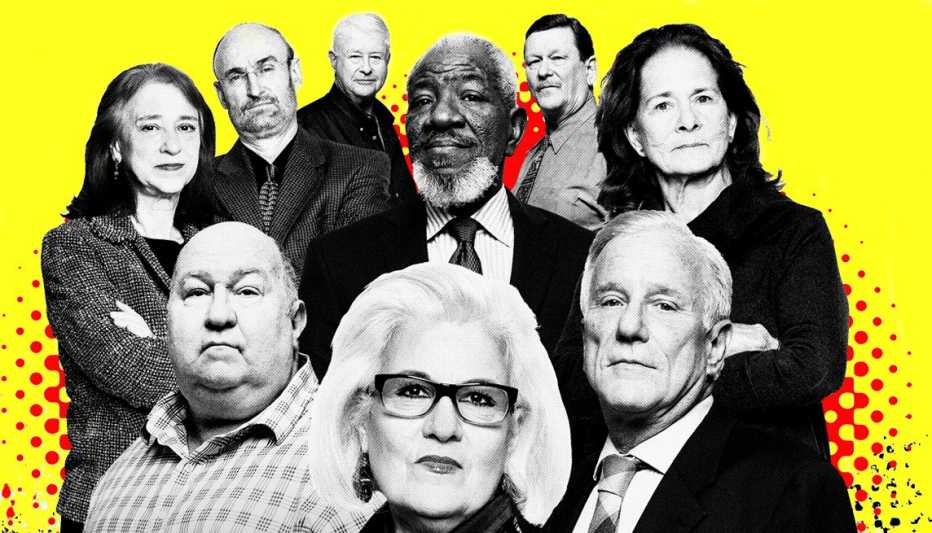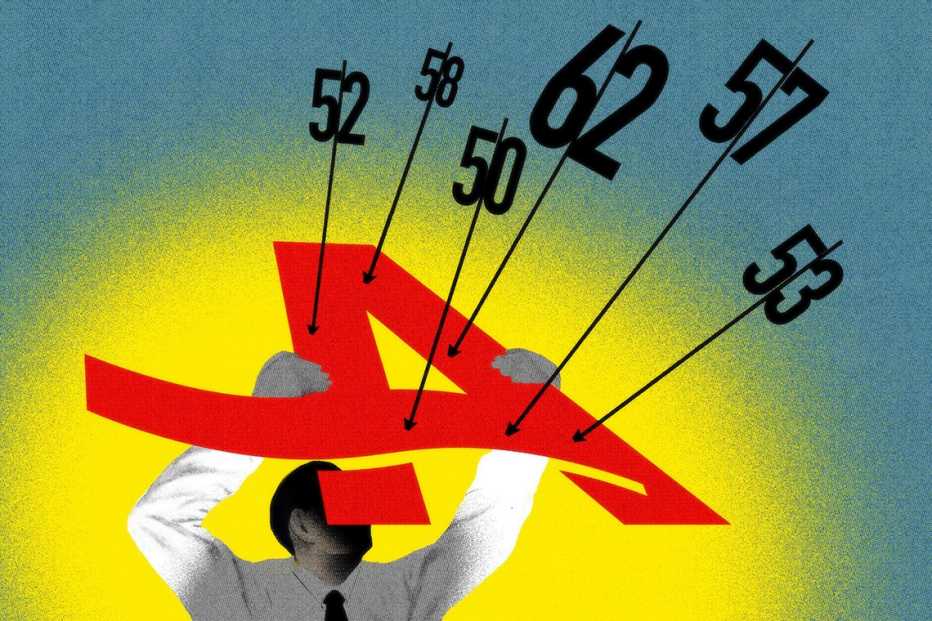AARP Hearing Center


About 35 percent of the U.S. population is now age 50 or older. Yet, in 2018, the Equal Employment Opportunity Commission — the nation’s workforce watchdog — issued a damning special report on age discrimination against older Americans. It concluded that even though 50 years had passed since Congress outlawed the practice, “age discrimination remains a significant and costly problem for workers, their families and our economy.”
Victoria Lipnic, the EEOC’s acting chair at the time, went so far as to compare it to harassment: “Everyone knows it happens every day to workers in all kinds of jobs, but few speak up. It’s an open secret.”
That same year, an AARP survey found that:
- Nearly 1 in 4 workers age 45 and older have been subjected to negative comments about their age from supervisors or coworkers.
- About 3 in 5 older workers have seen or experienced age discrimination in the workplace.
- 76 percent of these older workers see age discrimination as a hurdle to finding a new job; another report found that more than half of these older workers are prematurely pushed out of longtime jobs and 90 percent of them never earn as much again.
Diane Huth’s story is not unusual. “I am 69 years old, and that means I am unemployable,” says Huth, who lives in San Antonio. “I worked in corporate America for more than 40 years with big-name companies in branding. But I cannot get a job, the same job I rocked 15 years ago. I cannot even get an interview for that job because of all the screening mechanisms. I’m just too old; nobody takes me seriously for a job at my age, even in things I had excelled at.”
That rampant discrimination has a huge ripple effect:
- 29 percent of U.S. households headed by someone age 55 or older have no retirement savings or pension, meaning they’ll have to continue working or rely on Social Security to survive. But if the only job that remains open to them is unskilled and minimum wage, what does their future hold?
- Older people who don’t feel useful are three times more likely to develop a disability and four times more likely to die prematurely, compared with counterparts who do feel useful, according to a 2007 study published in the Journals of Gerontology. If 30-plus years as a professional are suddenly thoroughly discounted by the business world, the effect on your health and longevity is undeniable.
Paradoxically, what most companies do not seem to understand is that older workers possess a depth of knowledge and experience that’s worth paying for, is not easily replaced and can be tapped in many different ways.
“People walk out of companies now with an enormous amount of intellectual property in their heads,” says Paul Rupert, the founder and CEO of Respectful Exits, a nonprofit consulting firm that’s raising corporate awareness about age discrimination. “They know things that are essential to the company’s success, and if that knowledge is not captured and transmitted to the next generation, that company is losing a tremendous chunk of capital and it’ll eventually pay a price.”
How did we get to this point? And how can we combat such widespread age discrimination?
To answer these questions, the AARP Bulletin asked me to independently examine ageism in the workplace to determine why it is so prevalent and what can be done about it, to provide both a snapshot and a primer on the state of age discrimination in America. Here’s what I’ve learned.


AARP Is fighting age discrimination
AARP is strongly committed to protecting older workers from age-related bias and pushing for stronger laws and policies that guard your rights. And we offer lots of programs to support people fighting discrimination or trying to stay in the workplace after age 50. Here’s some of what we do — and some links you can use to get help.
Defending your rights. AARP Foundation attorneys are protecting older adults against age discrimination in courts throughout the nation, including the U.S. Supreme Court. Cases are selected especially when they are expected to establish significant legal precedents. AARP Foundation also files briefs in many important age-related cases.
Fighting for better laws. AARP’s policy team has been pushing hard to pass legislation that would fix a 2009 Supreme Court decision that made it much harder to win an age discrimination case.
Helping change state laws. AARP is championing bills in several states to stem the tide of workplace age discrimination. Get news and alerts about AARP’s efforts with state lawmakers.
Working with employers. Through its Employers Pledge Program (EPP), AARP works with companies to help them understand the value of older, experienced workers. More than 1,000 employers have signed a pledge publicly affirming that they are committed to fighting age discrimination.
Finding a job. AARP’s Job Board is designed to help older workers find employers committed to fighting age bias. The Job Board includes work postings from companies that have taken AARP’s Employer Pledge.
Back to Work 50+. This AARP Foundation program provides the training and tools older adults need to compete for today’s in-demand jobs. Visit aarp.org/BackToWork50Plus or call 855-850-2525 to register for a workshop.
Résumé retooling. Résumés can be tailored to make it harder for prospective employers to ignore you based on age. AARP Resume Advisor, powered by TopResume, offers a free résumé review for everyone and custom professional writing packages at a discount for AARP members.
Find out more. Go to aarp.org/AgeDiscrimination for more practical advice and resources to help workers age 50-plus deal with age discrimination.
— Michael Hedges
Ageism: An accepted bias
If you haven’t felt the pinch of ageism yet, trust us, you will. If you apply for a job online, there’s a good chance that a screening algorithm will automatically disqualify you because of your age. If you’re an older employee, it’s likely you’ll bear your share of age-related comments and jokes. And if you’re gunning for a promotion or heading into a job interview, you may feel compelled to touch up the gray, dress a bit younger and act like technology is your best friend.
That’s because ageism in the workplace occurs every day across America, and it is tolerated or — even worse — unrecognized for what it truly is: discrimination, plain and simple.
“Age discrimination is so pervasive that people don’t even recognize it’s illegal,” asserts Kristin Alden, an attorney specializing in employee rights at the Alden Law Group in Washington, D.C.
What immediately became apparent in my reporting is that, like other biases and discriminatory practices, ageism takes many forms. In the workplace, we found illegal age discrimination in three main areas:
- Recruitment and hiring, when younger applicants are shown favor simply because of their age.
- On-the-job bias, when older workers receive fewer training opportunities, promotions and rewards, or are harassed.
- Termination, when a company “freshens” its workforce or trims budget by targeting senior employees for layoffs or encouraging them to retire.
Paul Rupert, of Respectful Exits, suggests — persuasively — that the problem emanates from our free-enterprise roots. The predominant business model in this country is still an industrial one where companies view employees as “human capital,” he says. “It’s a sad phrase, but companies view their workforce the same way they view their capital equipment. You buy it, you assume it has a certain shelf life, and then you get rid of it and replace it with a new model.”
Stories like these are typical:
“I became aware of ageism when it happened to a couple of people I cared about,” says Patti Temple Rocks, who has spent 38 years in communications and is the author of I’m Not Done: It’s Time to Talk About Ageism in the Workplace. “My first reaction was, I’m not going to let this happen to me. I’m going to be completely in touch with when I’m no longer relevant. I read everything I could about reinventing myself. But when it did happen, I realized everything I had been thinking was wrong. I was still on my game, but I was being moved into a nonessential role to make room for someone younger. I wasn’t ready for my second act because I was still well into my first.”
“I learned to structure my résumé in ways so it’s not obvious how old I am,” says an engineering executive in his late 50s, who asked to remain anonymous. “I would get calls, the phone screens would go really well, but then when I went for interviews — sometimes flown in by corporate jet — I’d never hear back or be told someone else got the job. Eventually, I realized what they were thinking when I walked in: This guy isn’t a spring chicken.
These tales are as easy to find as, well, spring chickens. Between 1997 and 2018, approximately 423,000 U.S. workers filed age discrimination claims with the EEOC. That’s roughly 19,200 per year and 22 percent of all workplace discrimination claims. But here’s something important to keep in mind: An AARP survey found that only 3 percent of older employees have ever made a formal complaint of age discrimination to a government agency or someone in the workplace, which means there are probably hundreds of thousands more who simply accept the job rejections, shrug off the denials for promotion, withstand the workplace harassment or take the offer of early retirement.
The EEOC says there is “vast underreporting of the problem,” but there is an equally big issue: the EEOC itself. Understaffed and charged with battling discrimination of all types, the agency has simply been unable to take up its cudgel to fight hard for older workers. More on that soon, but first some background.

































































Special Report: Age Discrimination in America
Learn the Language of Age Discrimination
Older workers can be threatened, made miserable and bullied in the workplaceAge Bias That's Barred by Law Appears in Thousands of Job Listings
With the words they use, employers keep experienced workers from applying
Fighting Age Discrimination in the Courts
They fought against companies like Google and Ruby Tuesday, but justice was elusive and incomplete